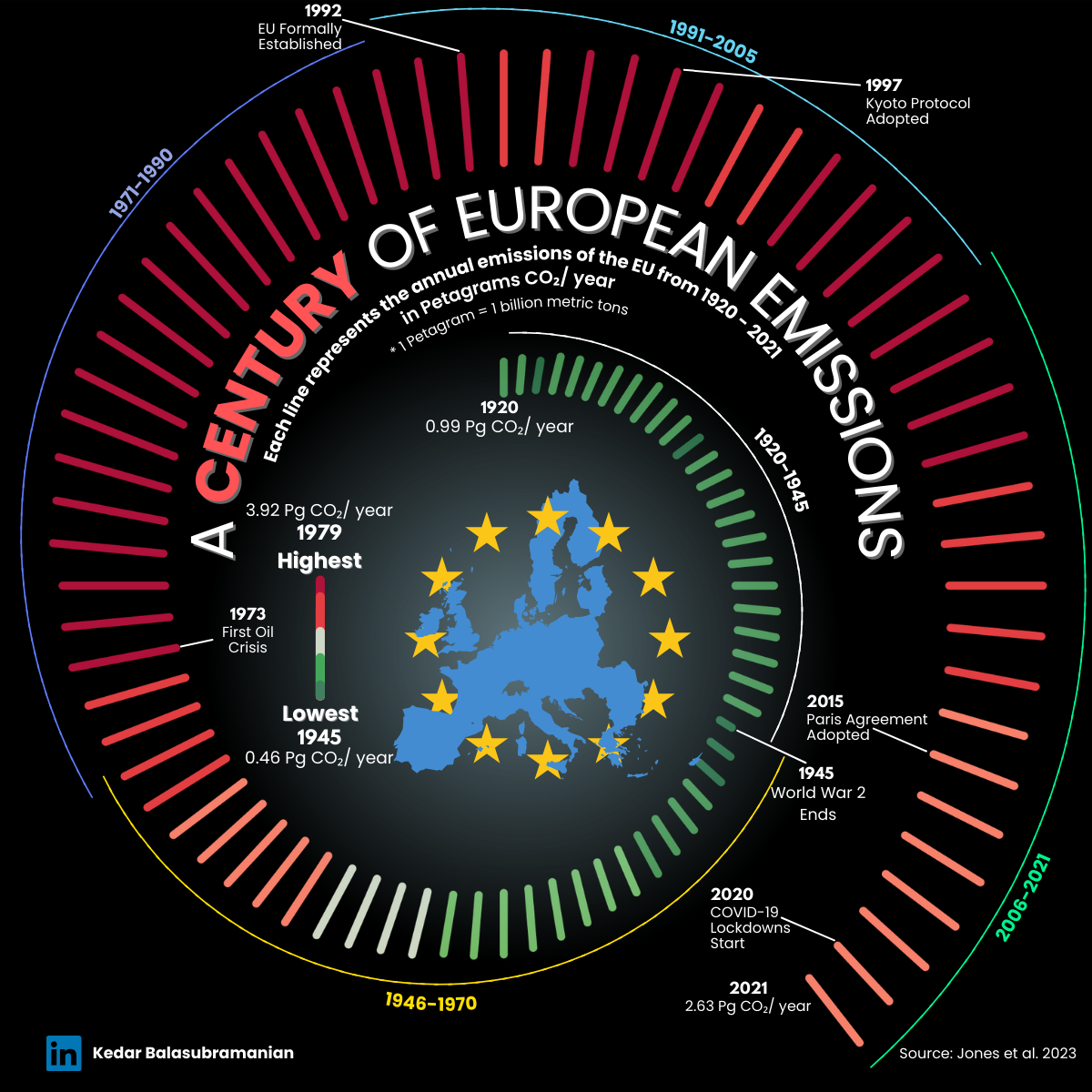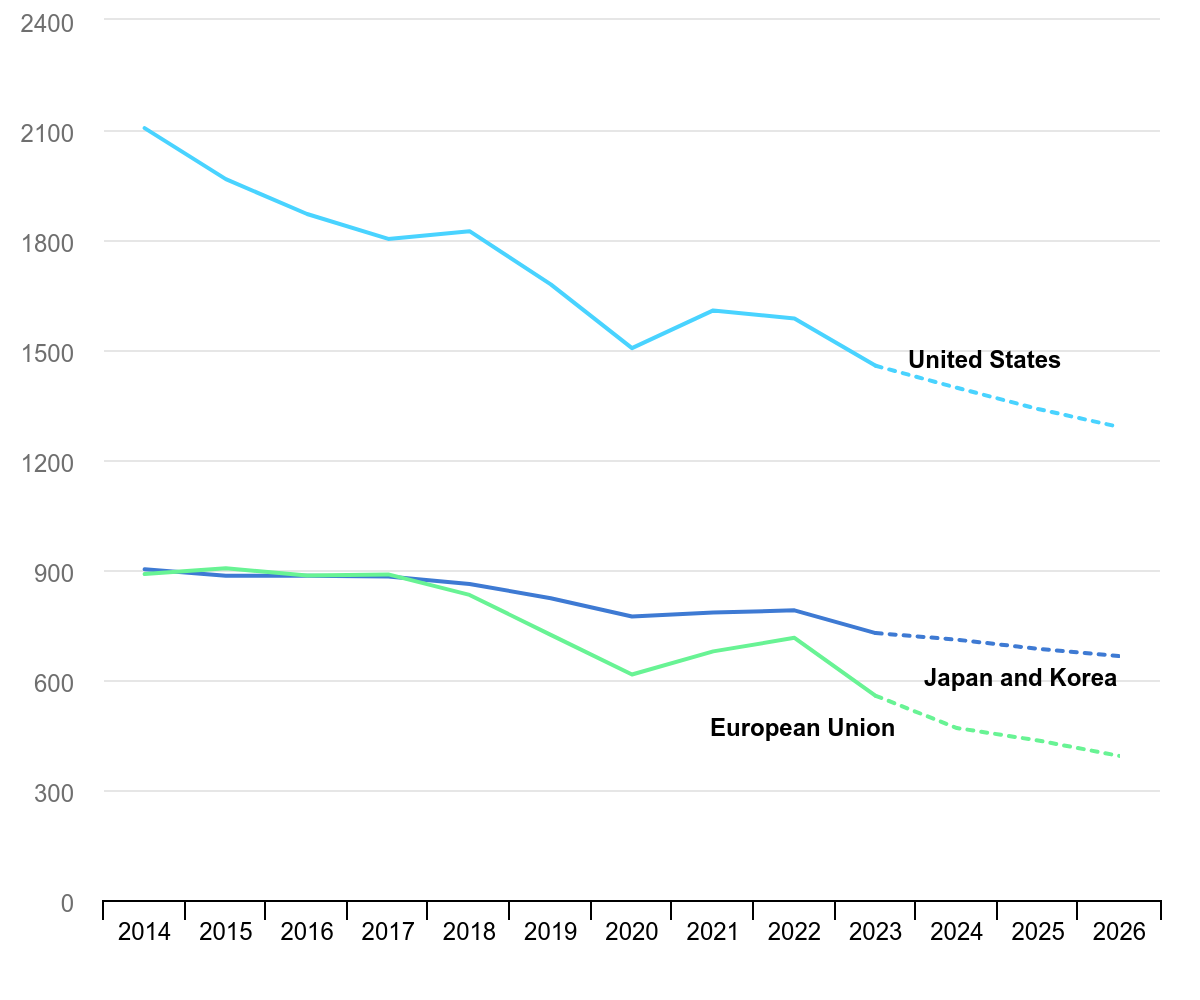European emissions, and the art of “titiksa”


· 5 min read

A lot of us are avid readers of news pieces; and so, the latest articles surrounding European climate change might definitely have crossed our feeds. Be it record temperatures in Spain, Norway reeling from its worst storm in 30 years, or the dystopian prediction of half of European land going down in value by 80%, by 2021 due to climate change, from the European Environment Agency (EEA), these pieces catch our attention. And, far from playing them down, they are indicators that Europe must fundamentally change the way it deals with climate change and emissions.
But isn’t it already happening? Isn’t Europe already moving towards “greener” pastures? Aren’t we already noticing the sliver of a rainbow in the clouds, thanks to decisions that were taken decades ago? And if we aren’t, maybe instead of doubling down on harsher restrictions, should we just wait it out?
The concept of Titiksa is one that is directly taken from the Bhagavad Gita. It essentially means tolerance. Because during our lives, we will traverse through a diversity of situations, relationships, events, and experiences, some of which might be good, while others are not. As human beings, the more we tolerate these events (regardless of good or bad), the more we grow.
Figure 1. A century of European emissions

Europe's emissions story began during the Industrial Revolution of the 18th and 19th centuries when coal-powered manufacturing turned it into a global economic powerhouse. This era's shadow was a thick cloud of emissions that darkened skies and dirtied rivers. By the 20th century, Europe had become the world's largest emitter of greenhouse gases (GHGs), a trend that was overtaken by the US only by the middle of the century.
Data often has the potential to shift our perspectives. The figure above visualizes the absolute annual emissions of CO2 of the European Union (and its precursor, the European Economic Community) between 1920-2021. The unit of emissions is in petagram (1 petagram = 1 billion metric tons of CO2), and each line represents the emissions of that respective year.
What do you notice when you first glance at the picture? Is it the steady rise in the annual emissions (also visualized as the moving from green to red)? But after a prolonged period of large emissions till the early 2000s, that trend suddenly seems to be reversing. This is evidenced by the emissions dropping to levels last seen around the early 1960s. But why is this happening?
We might think that the cause for this declining trend since the early 2000s is due to actions that were taken during those years, but that isn’t entirely correct. Starting with the first oil crisis in the 1970s, the EU has been particularly conscious of the fact that fossils might not be the future and that it needs to divest away from them.
It wasn't until the 1972 UN Conference on Human Environment held in Stockholm, that the realization of the consequences of unchecked emissions led to a continental shift in mindset. The EU, with its growing environmental consciousness and armed with financial and policy support, began to spearhead efforts to reduce GHG emissions, the effects of which started gradually but steadily showing from the 1990s onwards. The signing of the Kyoto Protocol in 1997 (and the subsequent Paris Agreement almost 2 decades later) further committed the EU to a path from which return was impossible.
Some of the other notable blips on the graph aren’t a result of conscious policymaking, but a ripple effect of other economic events. Take for example the 2008 financial crisis, as a result of which the trend shifting downward accelerated. As notably mentioned by the EEA in their report, the exceptionally deep recession affected all economic sectors.
The EU's Climate Action Progress Report outlines the need for continued and concerted efforts across all sectors to maintain the momentum of emission reductions. Fast forward to today, and Europe finds itself at a crossroads. Emissions have undeniably decreased since their peak, and levels in the 2020s already harken back to those of the 1960s. But what do you know, the pace of this decline is still under scrutiny to be accelerated!
Figure 2. CO2 emissions from electricity generation in selected regions, 2014-2026

But is there always a need to act? Every graph out there shows emissions slowly decreasing. Maybe instead of pushing all-out on net zero, Europe’s moment of Titiksa has arrived. Maybe it’s time to watch all the decisions taken over the last half a century bear fruit. But why not go all out? you might ask.
Because transitioning to net zero is a monumental undertaking that comes with a hefty price tag. The European Commission estimates that achieving the 2030 climate and energy targets will require €260 billion of additional annual investment. The transition also involves a cultural shift towards sustainability, with increased public transportation usage, adoption of electric vehicles, and a move towards circular economies. While certain aspects of this lifestyle shift are bearable and achievable, is such a massive expenditure really necessary?
Europe's emissions narrative is a saga of transformation, from a polluted past to a greener future. The continent's commitment to net zero is a bold statement of intent. It might seem like the more we do to rid ourselves of pollution and emissions, the more we suffer. However, if the concept of Titiksa teaches us anything, it is that we must endure.
But sometimes, when the itch to take action is more than just waiting, we have to make them smaller. Why, for example, doesn’t the EU offer simple tax credits for companies to slowly switch over to green projects? Also instead of pushing to directly adopt green Hydrogen, maybe the ambition could be reduced in size and split out over multiple milestones.
if events over the last 2 years have taught us anything, it is that geopolitics today are unpredictable. The entire world is in a state of another recession, and the best thing for Europe to do right now, might be to play its existing cards right, and not further stir the cauldron.
Future Thought Leaders is a democratic space presenting the thoughts and opinions of rising Sustainability & Energy writers, their opinions do not necessarily represent those of illuminem.
illuminem briefings

Electric Vehicles · Public Governance
illuminem briefings

Public Governance · Social Responsibility
illuminem briefings

Public Governance · Social Responsibility
Financial Times

Carbon Market · Public Governance
Luxembourg Times

Sustainable Finance · Public Governance
The Wall Street Journal

Public Governance · Social Responsibility